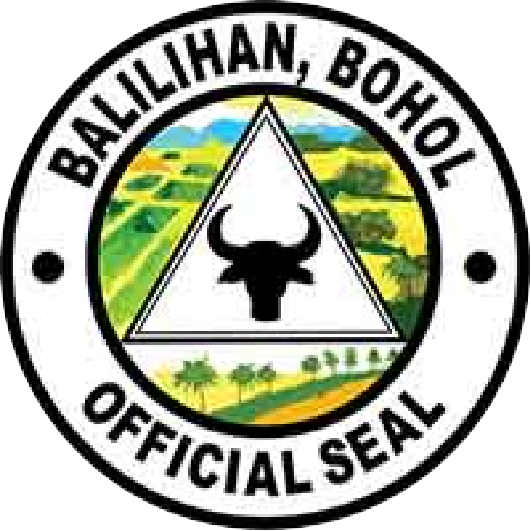History of Balilihan
Before the beginning of the 19th century, Balilihan was a barrio of the town of Baclayon and an old settlement where the families of Orig, Racho, Maniwang, Lacea and Pongase were the first inhabitants.
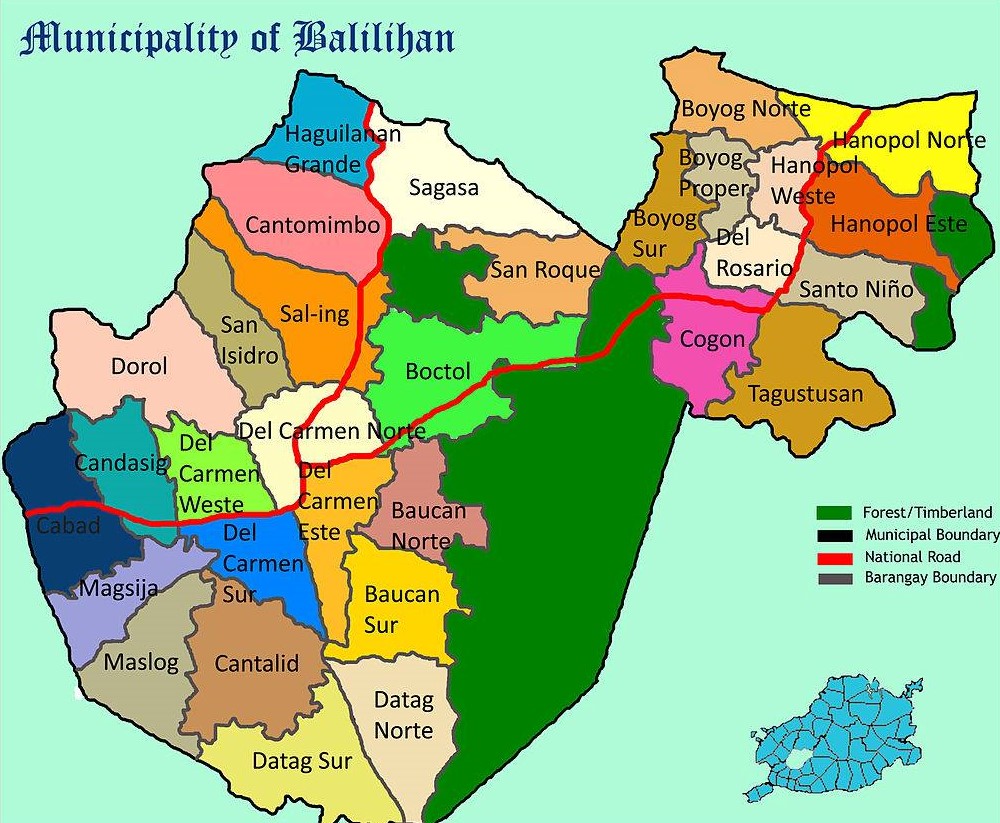
Present official name of the town: Balilihan
Popular name of the town, present and past derivation and meanings of these names.
On September 29, 1828, the organization of the pueblo of Balilihan took place and its name has remained unchanged. It is said that the place or site during those days was a rich grazing ground where the harmless native herb “balili” grew in abundance. Balilihan is derived from the word “balili” which means grassyland.

Names of sitios included within the jurisdiction of the town:
The sitios of Ka Bantolo, Ka Do’doy, Kang Taro, Kang Paki, and Kang Ponce got their names from the first settlers of the place. The sitios of Loop, Tiwi, Abaca, Luinab, and Ligating got their names from the names of springs, trees and plants and rocks which had existed in those places.
Ka Habel is a sitio about a kilometer in the western part of the poblacion. In the olden days a chief by the name of Habel was said to have lived there. The place was named after the name of the chief.
Ka Pruto is another sitio a kilometer in the northwestern part of the poblacion. The name Ka Purto was derived from the name of a person who first lived in that place in the early days.
Date of establishment:
Before the beginning of the 19th century, Balilihan which at that time was sparsely populated was a part of the town of Baclayon. When the Dagohoy revolt was suppressed by the Spaniards, the authorities established a garrison in Datag, one of its present barrios, to discourage and stamp out further uprisings on part of the natives. It was on September 29, 1828, when a friar, called by the natives as Padre Tomas, sought the cooperation of the inhabitants, organized, and established a settlement in the sitio of Bay sa Iring about two kilometers from the Spanish garrison. A capitan, by the name of Serafino Pongasi was appointed but his administration was short-lived because he met death in the hands of Manuel Danila with whom he had an altercation.
Original Families:
The original families where those of the Andoy and the Olbes from Baclayon and those of Cabal, Maceren, and Varquez from Loboc.
The Orig, Racho, Maniwang, Lacea and Pongasi were the natives of the place. These were the families that composed the first inhabitants of the town.
—————
The following is a list of capitanes or gobernadorcillos, presidentes municipales or mayors, priests, and justices of the peace of the town since its establishment:
Capitanes or Gobernadorcillos
Serafino Pongasi — 1829
Embing Olbes — 1832
Placido Andoy — 1835
Dangoy Orig — 1838
Gabriel Terec Racho — 1843
Placido Andoy — 1850
Juan Cabrera (presumably Juan Orig) — 1856
Cirilo Lungay — 1862
Eustaquio Vijar — 1868
Angel Terec Racho — 1873
Domingo Calope — 1877
Cecilio D. Calope — 1886
Bartolome “Tome” Racho — 1887
Bernabe Cabal — 1890
Antonio Casanova Racho — 1896
Presidentes Municipales
Antonio Casanova Racho — 1902
Manuel Chiu Diamante — 1903
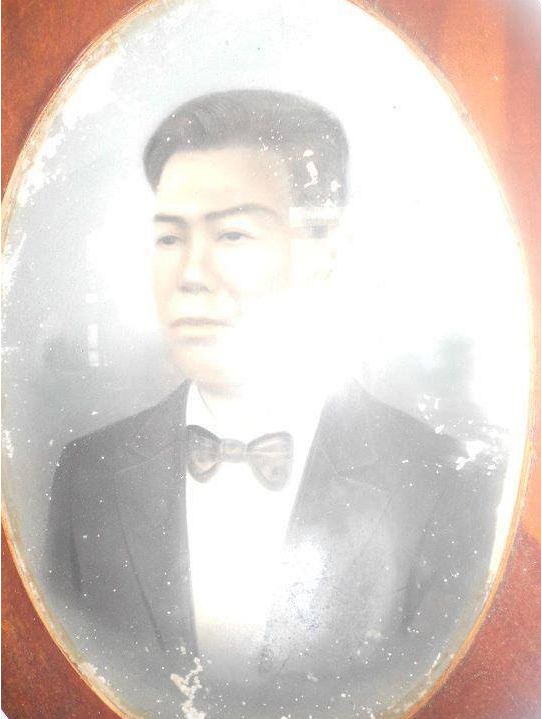
—–


Telesforo Orig (Telesforo Cabrera) — 1907
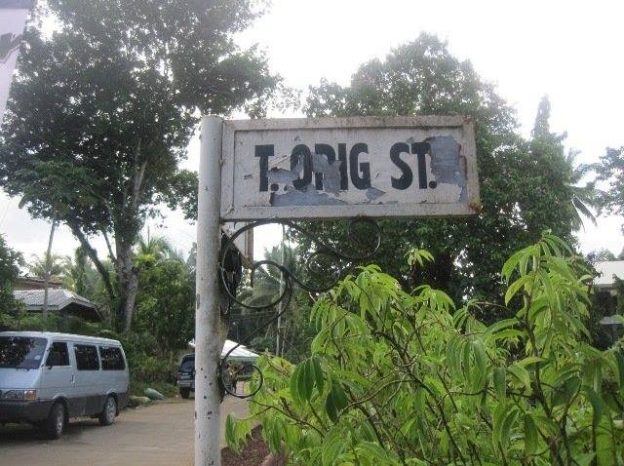
Segundo Sitoy Racho — 1910
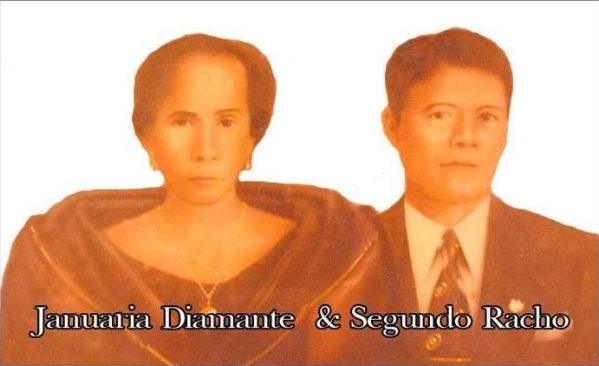
Telesforo Orig — 1914 (died: Oct. 9, 1914)
Ruperto Casanova Racho (Vice) — 1915

Segundo Sitoy Racho — 1917
Blas Jimenez Asunto — 1918
Eduardo Racho — 1924
Blas Jimenez Asunto — 1930
Patricio Baquero Ibarra — 1931

Simplicio Daray Calope — 1941
Vicente Chatto — 1942
Simplicio Daray Calope — 1945
Mayors
Simplicio Racho Maniwang, (Vice) Lucas Isiang — (appointed) June 22, 1946
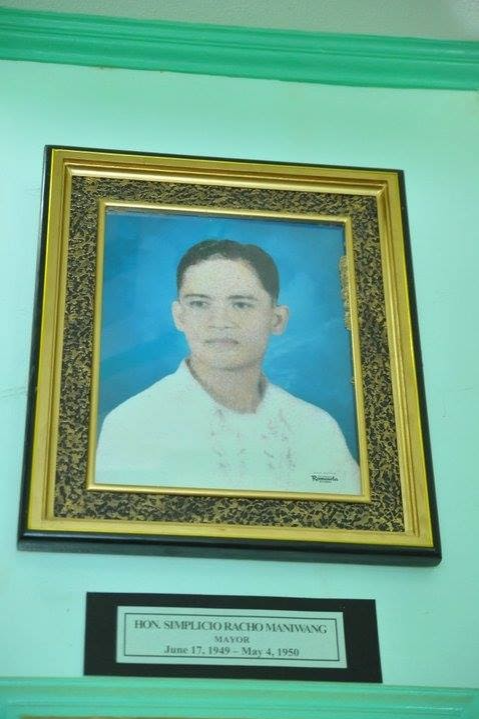

Balbino Chatto — 1949
Lino Ibarra Chatto — 1952

Getulio Daray Calope, (Vice) Agustin Silagan Racho Sr. — 1955

—————
Parish Priest
When the followers of Dagohoy were finally disbanded in August 31, 1829, they were pardoned and allowed to live in peace. On this date, the Spanish conqueror, Captain Manuel Sanz, reported that Balilihan has now a total population of 2,100 people under the temporary administration of Father Manuel Plaza de San Benito.
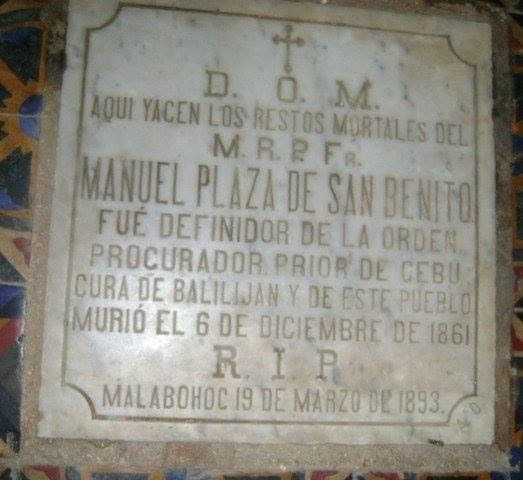
Friar Tomas (1829 — 1837)
Friar Santiago (1838 — 1855)
Friar Demetrio (1856 — 1876)
Friar Lucas Martinez del Romero (June 22, 1876)

Friar Carmona (1877 — 1885)
Friar Benito Grayoa (1886 — 1895)
Friar Eusebio Ortoeste (1896 — 1901)
Rev. Juan Villamor (1902 — 1909)
Rev. Baudillo Cavada (1910 — 1913)
Rev. Gregorio Lofranco (1914 — 1916)
Rev. Pedro Torrefranca (1917)
Rev. Eliseo Josol y Villamayor “Padre Esao” (1918 — 1930)
Rev. Hermenegildo Hangad (1931 — 1933)
Rev. Agapito Apdohan (1934 — 1936)
Rev. Aproniano Ochuga Galicia (1937 — 1948)

Rev. Gorgonio Ceballos Pueblos (1949 — 1952 +)

- The town and parish of Balilihan were from Baclayon in 1829, to make room for Dagohoy’s followers after the revolt, which lasted eight decades, were put to an end by a massive assault by Spanish troops from Cebu. The Recollects administered the parish until 1898. Although Redondo (1886, 177) reports the presence of a tabique church, the present church was probably completed in the early 20th century. The church mentioned by Redondo and renovated in 1889 was razed to the ground by American troops.
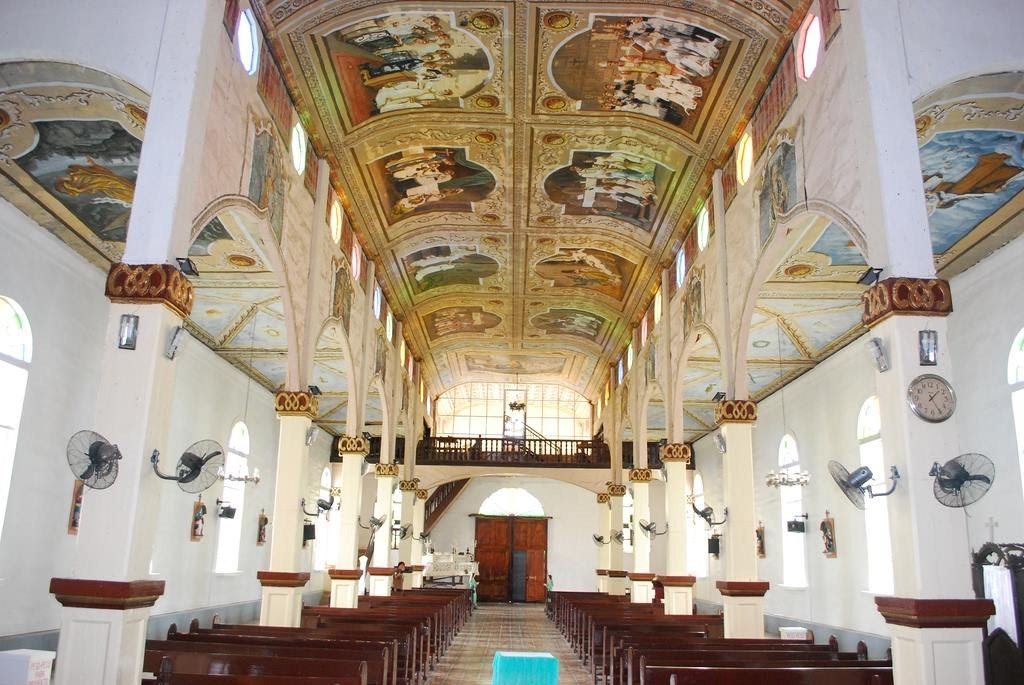


—————
Justice of the peace
Ambrosio Asuncion (1829 — 1861)
Rosendo Aleman Racho (1862 — 1885)
Francisco Racho (1886 — 1914)
Gabriel Saga (1915 — 1923)
Zacarias Concon (1924 — 1930)
Tiburcio Bongcaras (1931 — 1940)
Segundo Sitoy Racho (1941 — 1945)
Leandro E. Barnido (appointed February 5, 1946 — 1948)
Tiburcio Bongcaras (1949 +)
—————
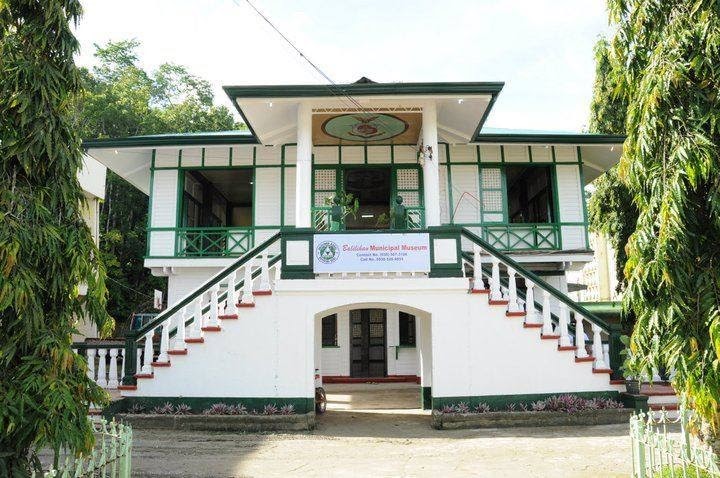
Between Datag and the poblacion, a sitio called “Bay sa Iring” was said to be a populated sitio during the early organization of the town of Balilihan, being made the seat of the poblacion. But due to the scarcity of water in that place, the town site was moved to the present site where water was abundant. The springs of Bulingit, Tan Pero, Boho’, Ka Do’doy, Ka Boro, and Abaca provide good source of water to the inhabitants. Today the sitio of “Bay sa Iring” is depopulate.
The burning of the church, convent, tribunal, school buildings for boys and girls, and private houses of the town on November 12, 1901 by the Americans, left only the belfry which still stands on a hill as the concrete proof of the efforts of the people in the establishment of the town. This tower is made of adobe stone and tiles. It was erected in the year 1835 under the able management of Friar Tomas and Capitan Placido Andoy. It was inaugurated in 1846 when Capitan Gabriel Racho was the gobernadorcillo.
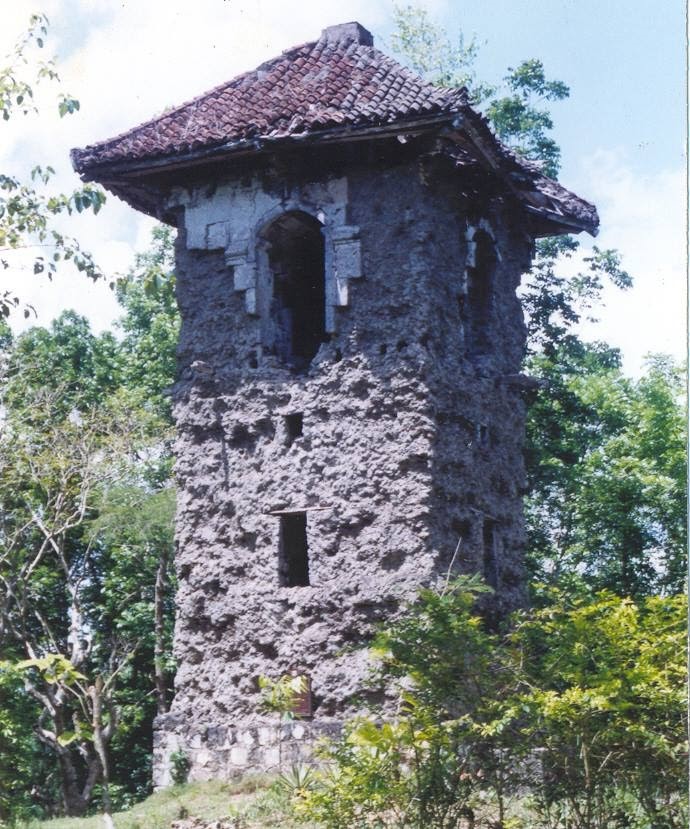
Important facts, incidents or events that took place:
During the Spanish Occupation:
The people of Balilihan were frustrate after the destructive typhoon in 1863 when almost all houses, public buildings including the convent and church were blown down.
In 1888, during the incumbency of Capitan Bartolome Racho, Friar Benito Grayoa ordered the people to transfer the town site to Cabad, a barrio which is four kilometers west of the poblacion. The Padre’s plan met vigorous opposition from the people and through the able leadership of Bartolome Racho, a protest was presented to the Spanish Military Governor, Linares. Capitan Tome’s action angered the priest. One day in April, when the governor made his official visit to the town, the priest accused Tan Tome of being reluctant to do the work for the new town site. He was punished by whipping and ordered to be dragged by the padre’s horse and put in prison. Not long after, he died in jail.
But finally, the voice of the people of Balilihan came out triumphantly because the governor, finding out that the people’s stand was right, retained the present site of the town. However, the people feared reprisals from the clergy. Some of them migrated to Surigao, Leyte, and Misamis. Not long afterwards, Friar Benito Grayoa was transferred to Siquijor.
During the American Occupation:
On November 12, 1901 an American force from Antequera was known to be coming to Balilihan. All officials of the town, with a brass band, were prepared to greet them. When the American force arrived, all the town officials were gathered and guarded in the municipio. The town was burned because the foreign troopers learned that the town played a great role in supporting the insurgents. Officials like Capitan Antonio Racho, Secretary Manuel Diamante and Councilors Esteban Ibarra, Telesforo Orig, Protasio Calope, Pastor Cabrera (also known as Pastor Orig), Nicolas Bersamen, Ruperto Racho, Antonio Lacea, Proceso Racho, Dionisio Madanguit, and all members of the band were investigated within closed doors. The pleading to save the town from being burned made by Mr. Segundo S. Racho, who acted as the group’s spokesman and interpreter was of no avail. These officials were ordered to move toward Sevilla while the civilians ran for safety to the outskirts of the town.
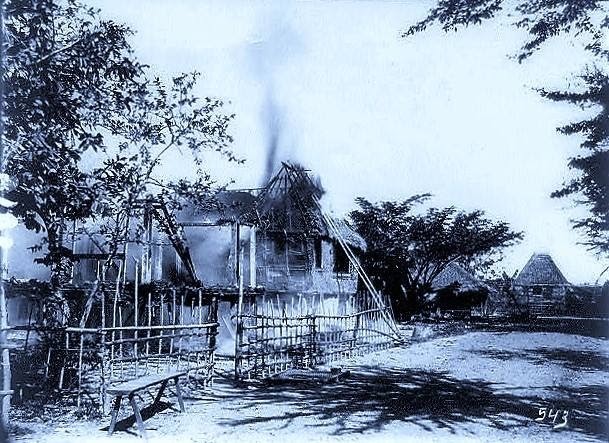
In the year 1904, during the incumbency of the provincial governor Aniceto Clarin, Balilihan almost suffered a great set back. The governor and members of the provincial board called the town people to a mass meeting in the town church with the purpose of informing them that Balilihan was to be annexed to the adjacent municipality of Antequera for reasons of economy and facility of administration. Upon knowing the order, thru the leadership of Segundo S. Racho, the incumbent president at that time, the municipal council and the “Principales” of the town, presented a vigorous and energetic protest to the said body. The people refused to sign the document of annexation and instead, promised to the said body to maintain the township of Balilihan even in the absence of provincial aid. The members of the provincial board were convinced and immediately revoked the order and instead ordered the annexation of the adjacent municipality of Catigbian to the town of Balilihan. Balilihan remained an independent municipality putting up high at all times, in prosperity and misfortunes, the unity and cooperation of the people.
During and after World War II:
During the Japanese occupation, Balilihan experienced again another event which concerned the people directly. Its people contributed highly to the morale and successes of the guerrilla movement due to their wholehearted cooperation. They were foremost in the feeding of our guerrillas in the front lines of the enemy, in the general headquarters of the guerrilla forces which was in Maitum, and in the concentration camp in the barrio of Hanopol.
During the World War II, only one private house was destroyed by the Japanese. The salvaged materials were used for the repair of the Magsija Bridge by the Japanese.
At the termination of World War II, people who evacuated to the different places returned to their respective homes. The government functioned. Peace and order was at once maintained by the police force and the normal livelihood of the people began to revive.
Everyone worked hard to rehabilitate and repair his home. Schools were opened and tax collection was begun so as to enable the government to repair and rehabilitate destroyed public buildings and to have other offices function.
Balilihan however, suffered a great loss of territory and income when the big barrio of Catigbian, now San Jacinto, gained back its new incorporation, the revival of the said municipality. In spite of the strong representation against the move made by the then town Mayor Balbino Chatto and Gerardo Racho who personally went to Malacañan to see President Quirino, the town charter of revival was approved in 1948.
___
History and Cultural Life of the Town and the Barrios of Balilihan
Published: 1953
National Library of the Philippines
—————
Balilihan Hymn
Balilihan sa Kahangturan
Kabalilhan diha sa imong ngalan,
Duyog ang kusog sa yanong buhilaman,
Kapatagan, kabukiran nga malunhaw,
Panalangin ni Bathala wa n’ya ihikaw;
Dinagayday sa imong kasugiran,
Diwa ni Dagohoy hunis kaliwatan,
Ngalan mo nakulit na sa mga bungtod,
Diha sa sabakan mo garbo ug bantayog;
Balilihan, Balilihan
Among lungsod, among yutawhan,
Gabayan ka sa mga tinguha,
Ikaw maoy mutya, among himaya,
Balilihan, Balilihan
Among lungsod, among yutawhan,
Gugma’g kadasig ikaw halaran,
Balilihan sa kahangturan
Balilihan, Balilihan
Among lungsod, among yutawhan,
Gabayan ka sa mga tinguha,
Ikaw maoy mutya, among himaya,
Balilihan, Balilihan
Among lungsod, among yutawhan,
Gugma’g kadasig ikaw halaran,
Balilihan sa kahangturan.
